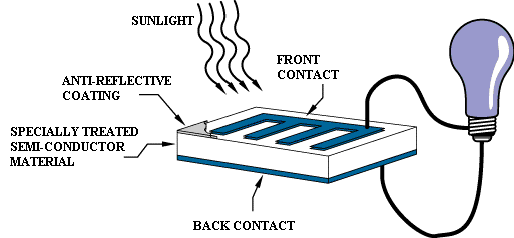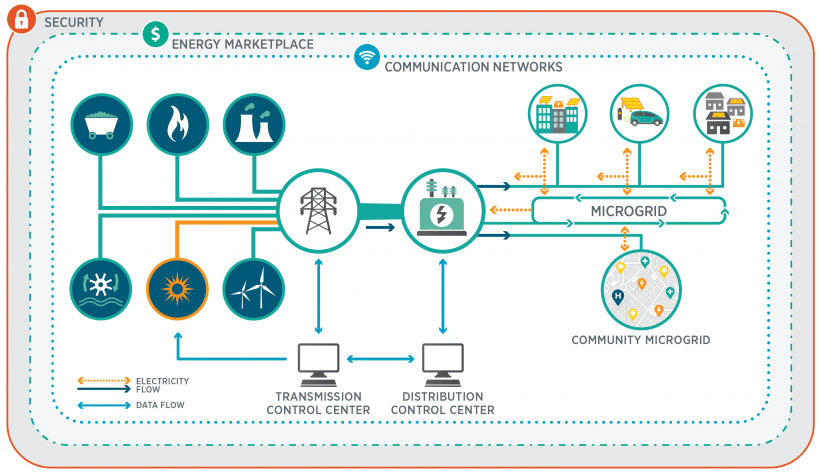Updated 11/24/2023
Solar power, wind, and hydro are the leaders among energy investments globally, with over $175.8 billion in solar.
But what do we know about solar power and the grid needed to generate, transport, and deliver consumer power? And how can we find great investments taking advantage of this growing resource?
According to EIA, renewable energy will pass coal as a leading source of energy generation in 2021. Of the new 42 GW capacity added, 76% includes wind and solar resources.
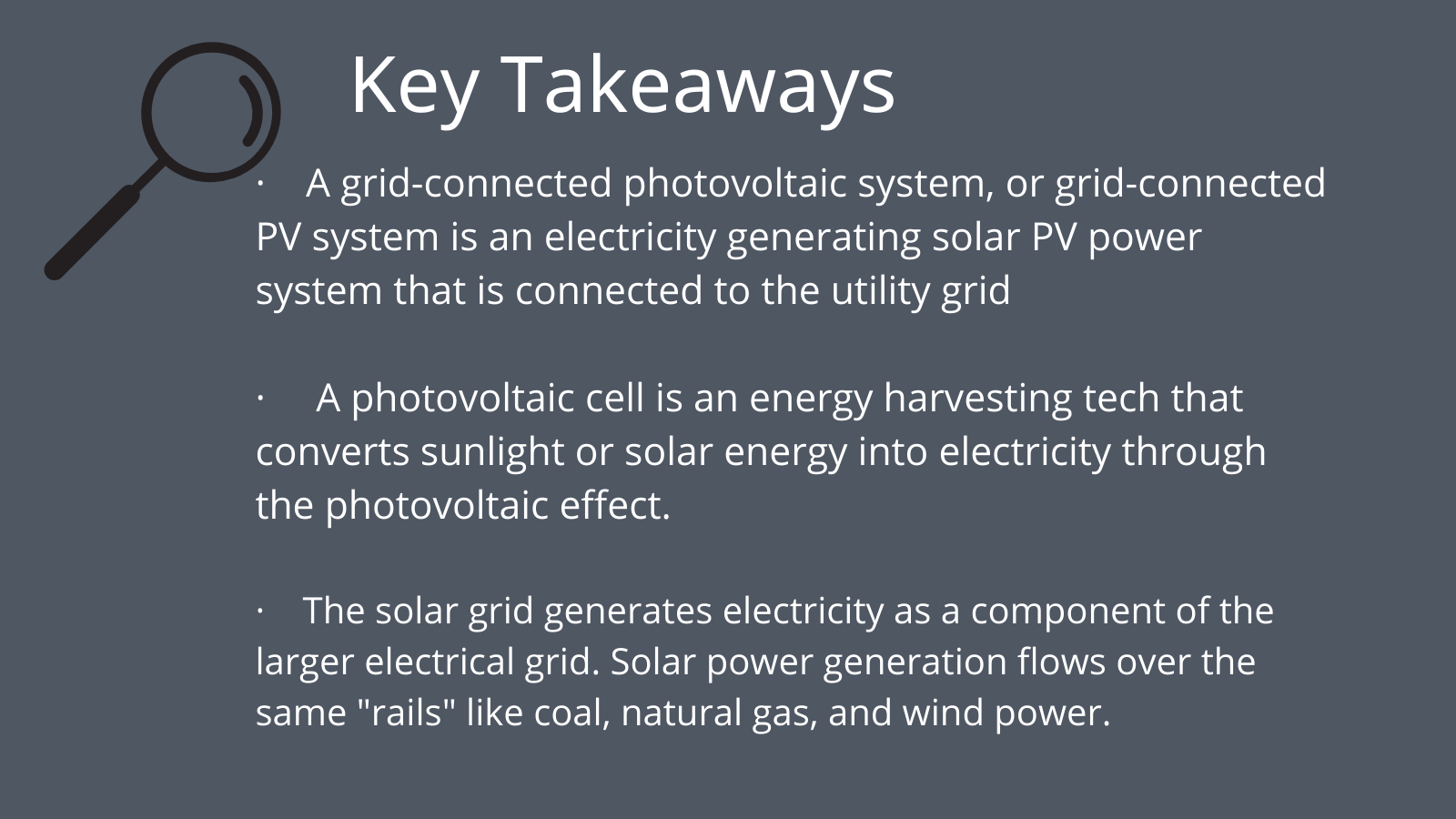
All of that bodes well for the coming years of building more capacity for renewable energy to meet the growing demand.
In today’s post, we will learn:
- What is a Solar Grid?
- How Do Solar Grids Work?
- What is the Difference Between Off-Grid or On-Grid Solar System?
Okay, let’s dive in and learn more about the solar grid.
What is a Solar Grid?
According to Wikipedia, a solar grid is:
“A grid-connected photovoltaic system, or grid-connected PV system, is an electricity generating solar PV power system that is connected to the utility grid.”
The solar grid consists of the following:
- network of solar panels
- multiple inverters
- power conditioners
- equipment that connects the network to the grid
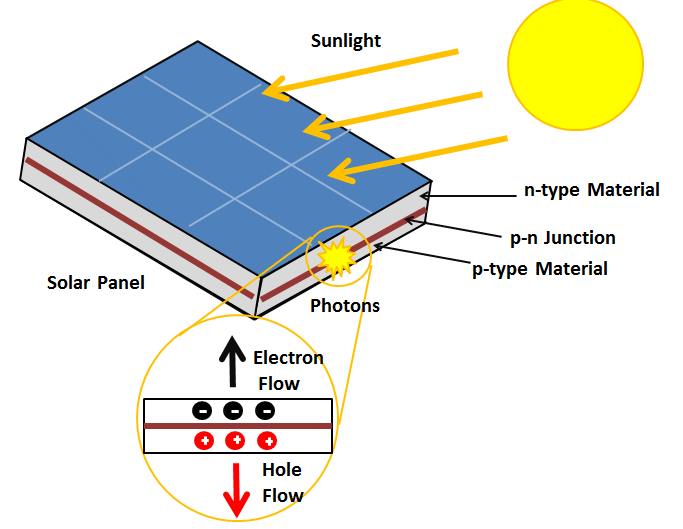
The solar grid can range from small residential to large utility-scale power systems.
When the sun shines and factors are good, the solar grid supplies excess power, beyond use, to the utility grid. For example, Hawaii combines small residential solar panels, producing enough energy via solar to reduce fossil fuels by 3% over the last five years.
Before we proceed, let’s talk briefly about solar power generation.
When the sun shines onto a solar panel, energy from the sunlight is absorbed into the solar panel’s PV (photovoltaics) cells. That energy creates electrical charges moving in response to an internal electric field in the PV cell, causing the electricity to flow.
What Are Photovoltaics
I know; what are photovoltaics?
A photovoltaic cell is an energy-harvesting tech that converts sunlight or solar energy into electricity through the photovoltaic effect.
When exposed to sunlight, the photovoltaic effect generates an electrical current in the PV cell. The PV effect makes solar panels useful. Edmond Becquerel first discovered the PV effect in 1839.
The PV cells comprise many layers of materials, each with a specific purpose. The most important layer is the specially treated semiconductor layer.
Yes, I know, even solar panels contain semiconductors; who knew?
The main layer contains two distinct layers that convert the sun’s energy to electricity we can use through the PV effect. The layer that collects the electricity is on the other side of the panel.
Fun fact: the PV effect is not the most efficient power generator. According to clean energy reviews, solar panel efficiency has grown from 15% to 20% over recent years. There are many technical reasons for reduced efficiency, but remember that the leading panels hit 20-22% efficiency for our purposes.
How Do Solar Grids Work?
The solar grid generates electricity as a component of the larger electrical grid. Solar power generation flows over the same “rails” as coal, natural gas, and wind power.
As the sun shines, the following path from an on-grid (home) solar system works like below:
- The sun shines down on the panels, generating DC electricity
- The DC electricity feeds into a solar inverter that converts the electricity to 240V AC electricity.
- The 240V electricity now powers our computers, TVs, and refrigerators.
- Surplus electricity flows into the main grid for others to use.
The same concept works with large solar farms on the outskirts of town or the countryside.
The large farms generate large amounts of electricity that feed into the large transmission lines, then to the substations and our homes.
Whether the sun shines, those solar cells generate electricity even in cloudy weather.
Remember that the photovoltaic cells convert the sun’s radiation into electricity but as DC. Our grid works on the AC currents, explaining the need to convert that power to AC power for our use.
When the solar grid, home or commercial, produces more power than we consume, the surplus power feeds into the main grid, helping power others on the grid.
Some utilities meter the electricity fed into the grid and provide credits for the individual owner.
There are a couple of things we need to consider with solar power.
First, the amount of sunlight striking the earth in an hour and a half more than covers the entire world’s electricity use for a year. Current solar technologies allow us to capture about a quarter of that sunlight and convert it to the energy we use.
Several big problems pop up when considering the use of solar power.
- First, solar power generation occurs when demand is lower. The nature of the grid and on-demand power usage make solar less than ideal.
- Second, the grid-level solar and wind power storage remains less than optimal. The development of battery technology lags the demand for solar grid storage. We don’t have the technology to store that excess solar energy on a grid level. And that slows the reduction of fossil fuels as energy producers.
- Third, solar panel output can overpower the transmission lines and lead to blackouts if not monitored closely. The current transmission lines tend to melt if too much power flows. The lines aren’t rated to handle solar power.
- Fourth, the amount of space required to reach the levels needed to replace fossil fuels could lead to environmental concerns in replacing wildlife and ecological turmoil.
According to NREL (National Renewable Energy Laboratory), the costs of installing solar panels and battery storage systems will continue to drop in 2021. Utility-scale solar systems dropped 12.3% in 2021 compared to 2020.
The utility-scale costs dropped, residential fell 3.3%, and commercial rooftop systems fell 10.7%.
As the costs drop, solar grid power becomes more attractive to both utilities and residential and commercial users. All of these continue to drive the increased use of solar power as a power source.
The technology driving better efficiency will improve, as will battery storage. Many exciting battery technologies are on the horizon that could lead to more breakthroughs in grid-level storage.
The major restraints to more usage of solar grids remain battery storage and costs, but as those improve and come down, solar grid use will likely accelerate.
What is the Difference Between Off-Grid and On-Grid Solar Systems?
An off-grid solar energy program doesn’t connect to the utility grid. In contrast, an on-grid solar system does connect to the utility grid. The choice between on-grid and off-grid determines a customer’s access to electricity.
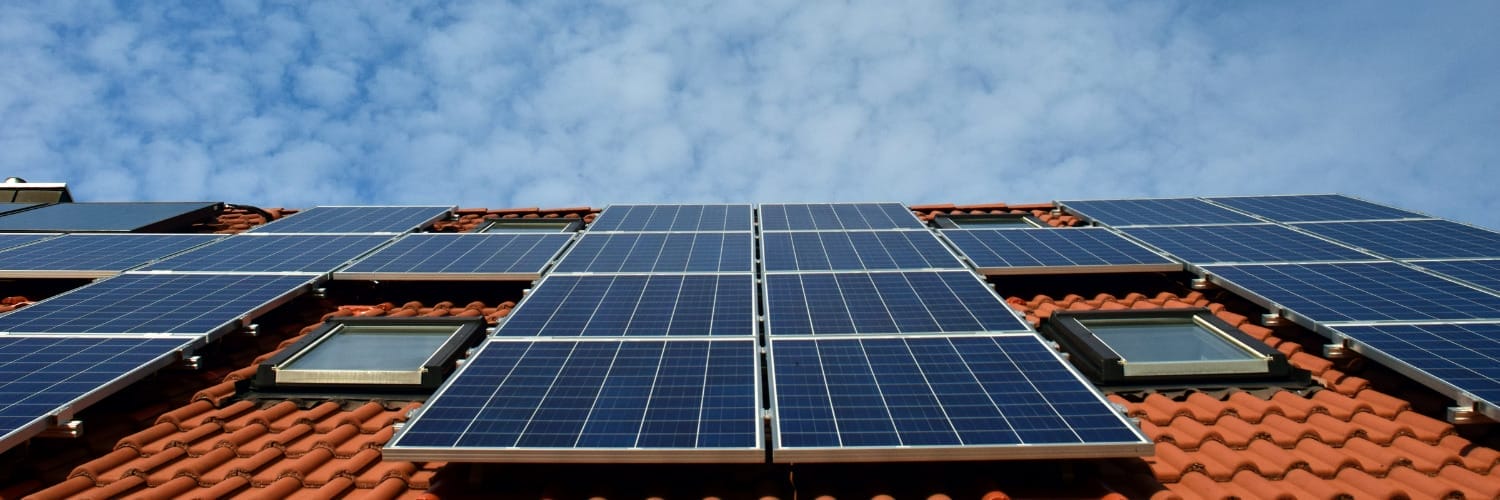
Other choices include the equipment needed for excess production, what happens when the grid goes down, everyone’s favorite, and how you pay for the electricity.
The main differences include four ideas:
- Access to electricity
- What happens to excess electricity
- How to deal with the grid going down
- Billing
Idea number one: The access to electricity
How do off-grid solar systems work?
With an off-grid solar system, customers are 100% reliant on the sun and any energy stored in batteries to power their homes or businesses.
Off-grid solar systems that opt not to connect to the grid access electricity in several ways:
- When the sun is shining, the installed solar modules generate electricity.
- Electricity flows from batteries or other storage systems at night or on cloudy days.
If no batteries are present, customers with cloudy weather or nighttime go through long periods without energy. The off-grid solar module system risks periods without access to electricity.
With an on-grid solar system, access to electricity will always exist, whether the system generates electricity or has no batteries.
If the solar modules don’t generate electricity for our devices, for example, TVs, dishwashers, computers, and lights, customers can access electricity from links to the grid.
What Happens to Excess Electricity Produced Through Solar?
There will be times when the solar module system produces more energy than we use, for example, depending on:
- The size of the system
- Energy capacity needs
- Time of energy use
Most off-grid systems designs produce some “extra” energy during the daytime and then send it to batteries for storage.
Depending on energy goals, we can size systems to produce enough “extra” electricity during sunlight to cover all energy usage needs.
One of the challenges remains Mother Nature: the sun doesn’t always shine, and several cloudy days can put a crimp in our energy generation. And this makes it a challenge to rely on off-grid solar without some backup like a generator.
Other options for plan B include purchasing additional storage batteries, but they remain expensive today, and purchasing batteries may be beyond many people’s budgets.
On-grid systems work similarly, producing energy during the daytime and storing excess energy for nighttime. But on-grid also allows the extra generation to flow back into the grid, with the solar module owner receiving credits for the extra electricity.
Many in the US gain benefits through a method called net metering. Net metering refers to the utility company’s rebate or credits for excess energy the consumer generates and sends to the grid.
The consumer receives credits for any power they draw from the grid during nighttime or cloudy weather, helping lower their bills.
Forty-one states currently have mandatory net metering rules, with others offering voluntary net metering to consumers.
These rebates and discounts for installing systems have helped increase the usage of solar panels among commercial and consumers. However, some of these incentives have drawn the ire of politicians and consumers because of the “perceived” bias of the policies.
For example, Hawaii ended net metering in 2015 because the state helped jump-start the adoption of solar by encouraging ideas like net metering. However, others who couldn’t install solar had a larger burden of grid payments.
These policies increased the installation of solar panels around the country, but many states started scaling back net metering to even out the utility payments across consumers and commercial.
How to Deal with the Solar Grid Going Down
One of the gains of off-grid solar is that it helps retain power during a storm. Even if the grid goes down, consumers and commercial can continue functioning as if nothing happened.
On the other hand, when we connect to the grid, we get access to electricity whenever we need it, but we remain subject to some rules. For example, if we connect our grid-solar panels and the grid goes kaput, we will not have electricity unless we use a backup battery system with our solar panels.
You may wonder why that happens.
The Underwriters Laboratories require the shutdown of solar panel systems for the safety of utility workers repairing power lines.
Billing of Solar
You won’t receive a bill with off-grid solar systems because you generate energy. But, solar grid systems remain expensive to install, maintain, and ensure they run efficiently. With the rebates ending for solar system installations, the returns on investments installers received take longer to realize, making them less attractive.
If consumers or commercial users opt for a grid-tied system, they could see minimal changes to their utility bills even if their system generates 100 percent of their energy needs.
Other charges that may show up on your grid-tied bill include:
- Service fees or delivery charges: these fees include a flat rate for connecting to the grid
- Demand charges fees levied on commercial properties cover the power demand during peak hours; typically, the top 15-minute period consumes the most energy.
A note on peak demand and utility bills: peak demand puts the largest strain on the grid because the largest drain on generation occurs in a compressed time. And utilities charge the highest rates during those peak hours to compensate for the increased surge in demand.
Solar grid systems offer reductions in peak bill spikes by generating electricity during the day, lessening our electricity demand.
We can also reduce our bills by using battery storage to reduce peak demand usage.
Investor Takeaway
Solar energy tech and solar power plants don’t produce air pollution or greenhouse gases when generating electricity. Using solar grid systems can positively impact the environment when solar energy replaces the use of fossil fuels.
However, solar energy has its drawbacks, such as the materials (metals and glass) that consume a lot of energy to create. The chemicals used to make photovoltaic cells need careful handling as they contain heavy metals and need special handling at the end of their useful life.
Other considerations include ecological impacts such as clearing land for solar farms. The clearing could disrupt local habits and animals.
Solar power grows in the US as it becomes more affordable, accessible, and prevalent. Solar panels have grown from 0.34 GW in 2008 to almost 97.2 GW today. That is enough power for 18 million homes. Today, almost 3% of the total energy generated in the US comes from solar photovoltaic systems.
Investing in solar energy requires investors to understand the systems, how they generate power, and how they impact consumers and customers. There remains little doubt that solar energy will continue to grow over the years, and investment opportunities will present themselves.
And with that, we will wrap up our discussion on solar grids today.
Thank you for taking the time to read this post, and I hope you find something of value. If I can further assist, please don’t hesitate to reach out.
Until next time, take care and be safe out there,
Dave

Dave Ahern
Dave, a self-taught investor, empowers investors to start investing by demystifying the stock market.
Related posts:
- Understanding the Electric Power Grid to Make Better Investments Updated 11/24/2023 The electric power grid is like the air we breathe; we don’t think about it much until something goes wrong. The power appears...
- How Electricity Generation Works Updated 11/24/2023 Consumers have begun to embrace the many forms of renewable energy despite rising environmental concerns. Investments in electricity generation are increasing tenfold, with...
- Understanding the Commercial Banking Industry – A Simple Guide Updated 1/5/2024 “Banking is a very good business if you don’t do anything dumb.” Warren Buffett The banking industry is an unknown entity to most...
- Core Bank Processing: A Breakdown of the Sector Updated 10/12/2023 The history of banking and how we handle our money is a fascinating subject, and the evolution of how we bank has been...

